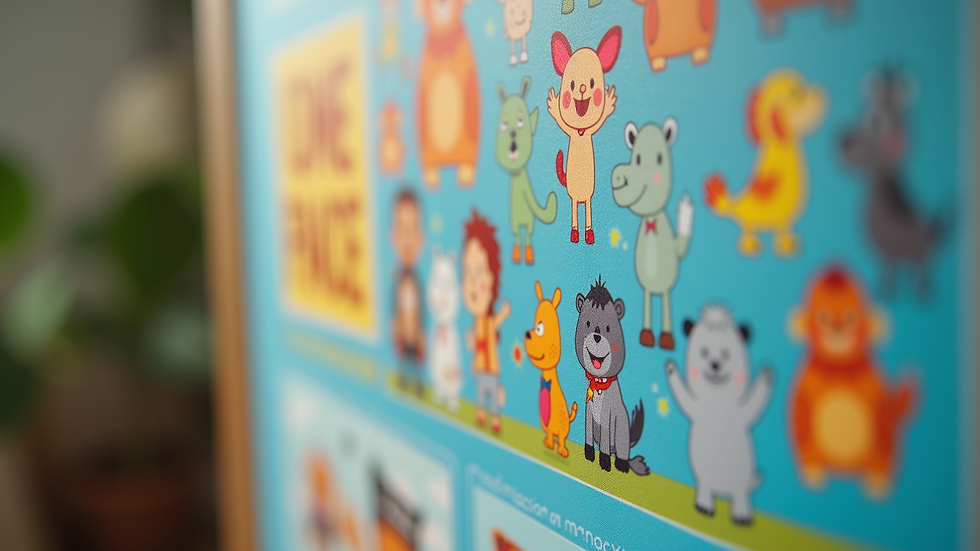How to Find the Best Educational Resources for Your Child
- Shivangi Dubey
- Jun 5
- 4 min read
Finding the right educational resources for your child can be a daunting task. With the vast number of tools and materials available today, parents may feel overwhelmed when trying to select the best options for their child’s learning journey. Fortunately, this guide will provide you with practical strategies and suggestions to help you navigate through educational resources effectively.
Understanding Educational Resources
Educational resources come in many forms, ranging from books and videos to online courses and interactive apps. These resources not only cater to various age groups but also accommodate different learning styles. For instance, visual learners may benefit from educational videos, while auditory learners might thrive with podcasts. To make informed choices, it's essential to identify your child's unique learning style and preferences.

Types of Educational Resources
As you explore educational resources for your child, consider the following types:
Books and Workbooks: Traditional resources like textbooks and workbooks can provide structured learning. Look for age-appropriate materials that align with your child’s curriculum or specific interests.
Online Learning Platforms: Websites like Khan Academy or Coursera offer free and paid courses across various subjects. These platforms often provide interactive quizzes and video lectures that can enhance learning.
Educational Apps: Mobile applications can make learning fun. Apps like Duolingo for language learning or Starfall for reading cater to different age groups and subjects.
Interactive Games: Consider educational board games or online games that promote critical thinking and problem-solving skills.
These resources can supplement your child's learning and keep them engaged.

Assessing Quality and Credibility
When selecting educational resources, quality and credibility are paramount. Here are some tips to assess the reliability of the resources:
Check Reviews and Ratings: Websites like Common Sense Media provide detailed reviews and ratings of various educational resources. Look for user feedback to gauge effectiveness.
Use Trusted Sources: Opt for resources published by reputable educational institutions or known authors in the field. These materials often undergo rigorous testing and evaluation.
Seek Recommendations: Ask fellow parents, teachers, or homeschooling communities for suggestions. Trusted recommendations can introduce you to high-quality resources that you may not have discovered on your own.
Making the Most of Available Resources
Maximizing the use of educational resources involves more than just selecting the right tools. Here are some actionable strategies:
Set Goals: Clearly define what you want your child to achieve with the resources. Establish specific, measurable, achievable, relevant, and time-bound (SMART) goals to track their progress.
Create a Routine: Incorporate educational resources into your child’s daily routine, ensuring consistent engagement. This could include set times for reading, exploring educational videos, or completing assignments.
Encourage Exploration: Allow your child to explore different resources and pick what interests them most. Curiosity can be a great motivator for learning.
Combine Resources: Use a combination of resources for a comprehensive learning experience. For example, a science book can be complemented by educational videos or field trips to museums related to the topic.

Staying Updated on New Trends
The field of education is constantly evolving, with new resources appearing regularly. To ensure that you have access to the best materials, stay updated on the latest trends by:
Following Educational Blogs: Many educators and parents share their insights and discoveries through blogs. Subscribe to reputable blogs focused on educational resources.
Joining Online Communities: Platforms like Facebook groups, Reddit communities, or online forums can connect you with other parents and educators. Exchanging ideas and experiences can keep you informed on the latest recommendations.
Attending Workshops or Webinars: Participating in educational workshops or webinars can expand your knowledge about various resources. Many organizations offer free or low-cost opportunities to enhance your understanding.
Tailoring Resources for Home Learning
For parents who choose an unconventional path, homeschooling provides a unique opportunity to tailor educational resources specifically to a child’s needs. Homeschooling allows you to create a personalized curriculum that reflects your child’s interests and abilities. Resources for homeschooling can include:
Curriculum Packages: Purchase comprehensive programs that include various subjects and resources designed for home education.
Local Co-ops: Join local homeschooling groups where parents share resources, expertise, and support.
Field Trips: Organize field trips relevant to your child’s interests, allowing for experiential learning beyond textbooks or screens.
Encouraging Lifelong Learning
The ultimate goal of providing educational resources is to foster a love for learning in your child. Here are some ways to encourage lifelong learning:
Model an Interest in Learning: Show enthusiasm for learning by engaging with educational materials yourself. Discuss what you are learning with your child.
Cultivate Questions: Encourage your child to ask questions and explore different avenues for answers. Curiosity is a strong driver of learning.
Celebrate Achievements: Recognize and celebrate milestones, no matter how small. This positive reinforcement can motivate them to continue engaging with educational resources.
By implementing the strategies mentioned above, you can help your child find the best educational resources and instill a passion for knowledge that lasts a lifetime. Focus on their interests and learning styles, and embrace the journey together. Remember, the best learning can often be found in the most unexpected places.




Comments